Abstract
The output of δ-aminolaevulinic acid (ALA) and of creatinine was determined in lead workers. Values from 24-hour specimens were compared with values from specimens voided at the time of examination. Highly significant positive correlations were found between the output of ALA and of creatinine in both sets of specimens. The individual spreads, however, were considerable.
Values for ALA in mg./100 ml. urine and ALA in mg./g. creatinine were strongly correlated in fresh specimens as well as in 24-hour specimens. When values for ALA in mg./100 ml. urine were compared with ALA in mg./g. creatinine, an approximate relationship of 1:5 was found in the range 1.0-3.0 mg. ALA/100 ml. urine, i.e., the mean urinary concentration of creatinine was 0.2 g./100 ml.
It is concluded that the collection of 24-hour specimens is not necessary and also that reference to creatinine appears to have no advantage over the simple expression of ALA in mg./100 ml. urine. This must be due to the fact that the influence of the metabolic activities of lead has a greater effect on the urinary concentration of ALA than has the concentration of urine in the kidneys.
Full text
PDF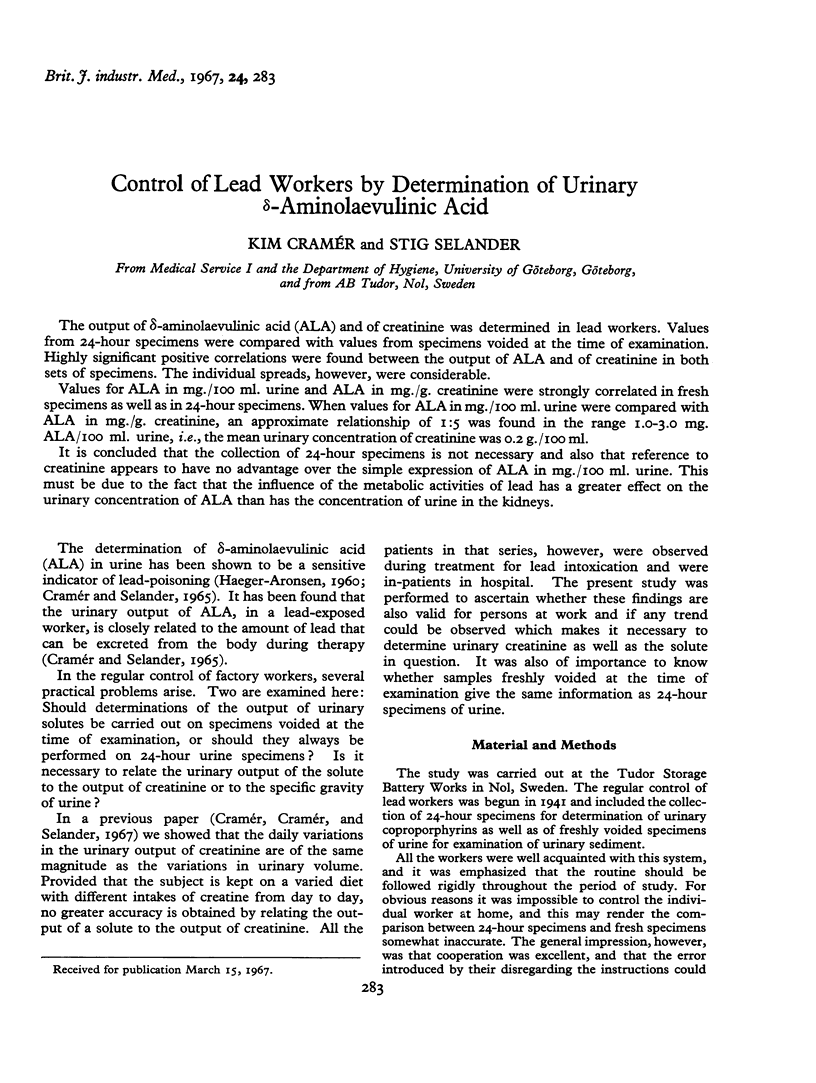
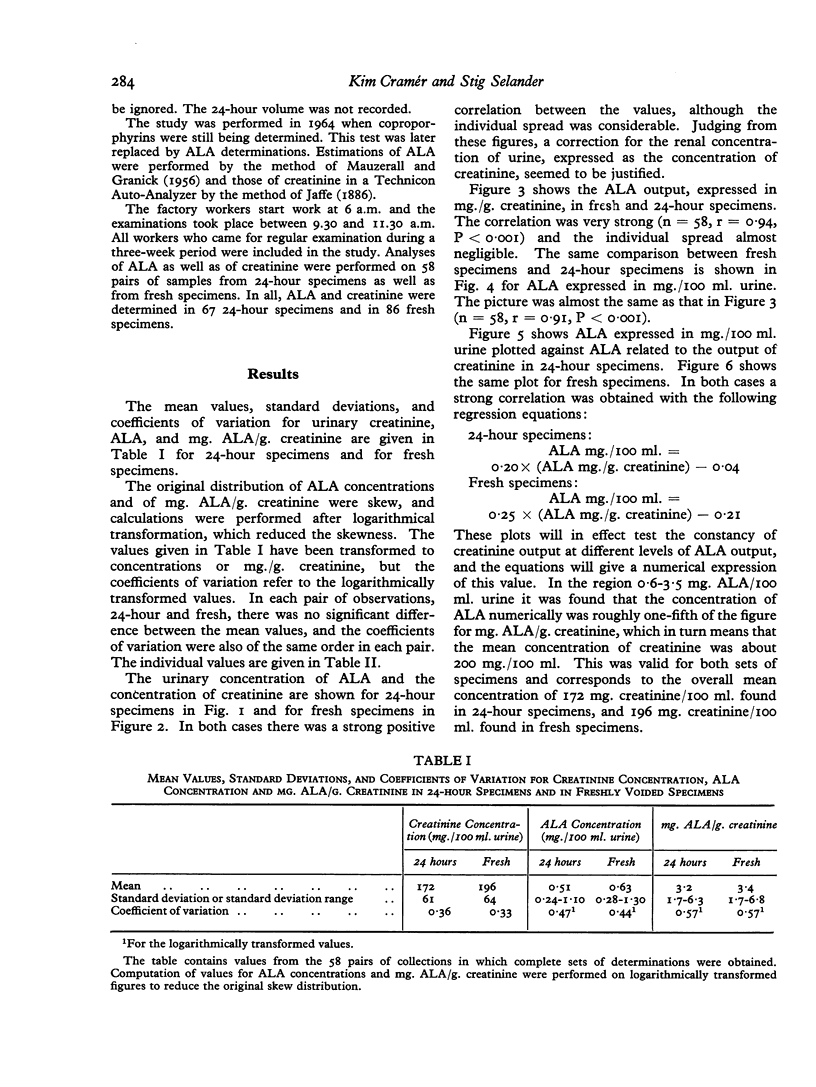
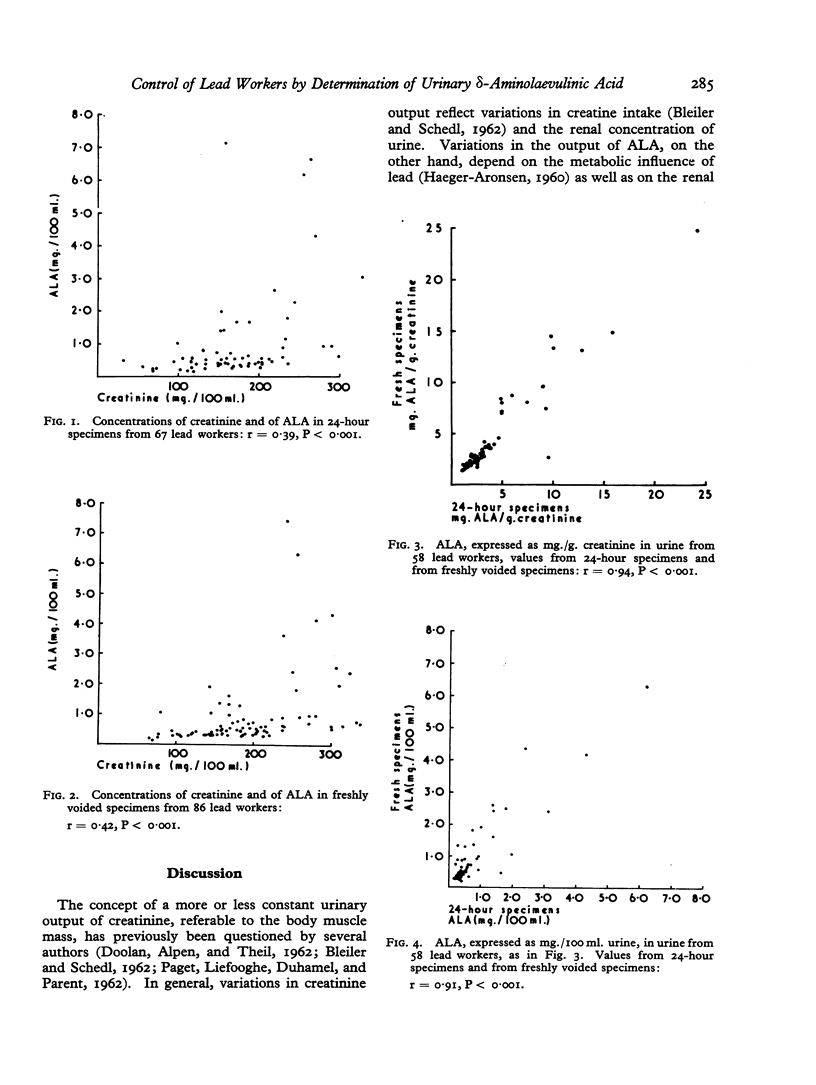
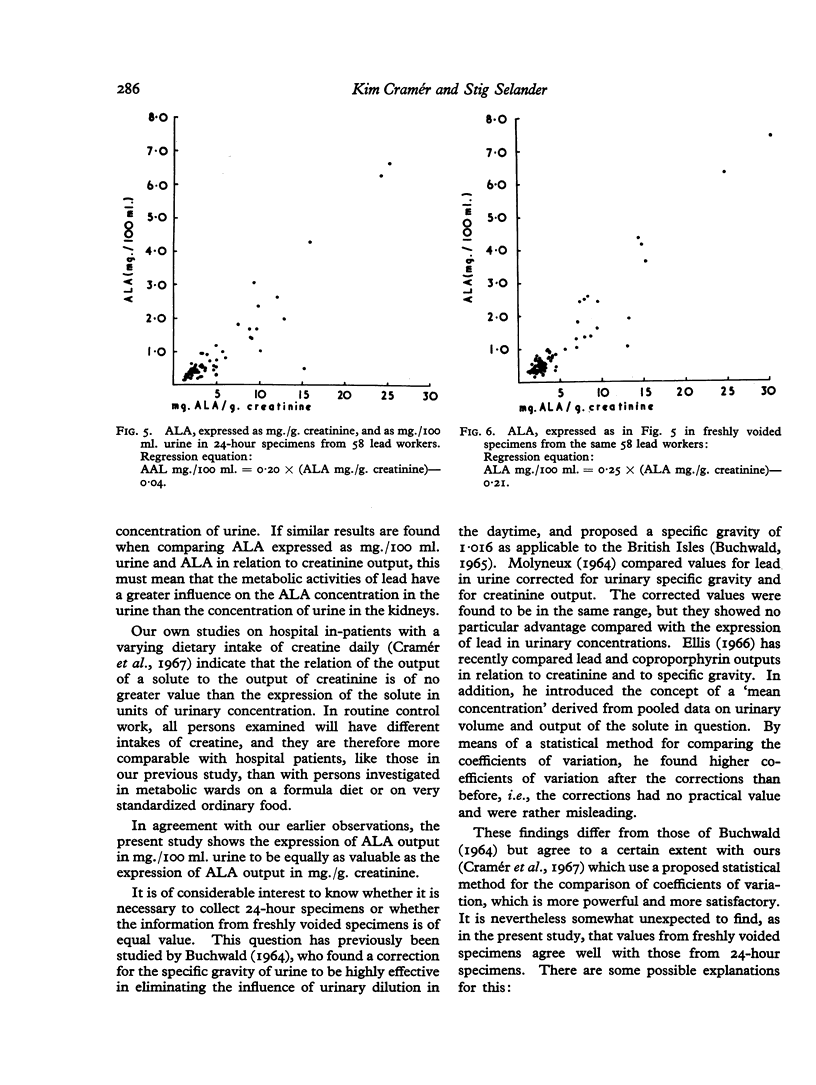
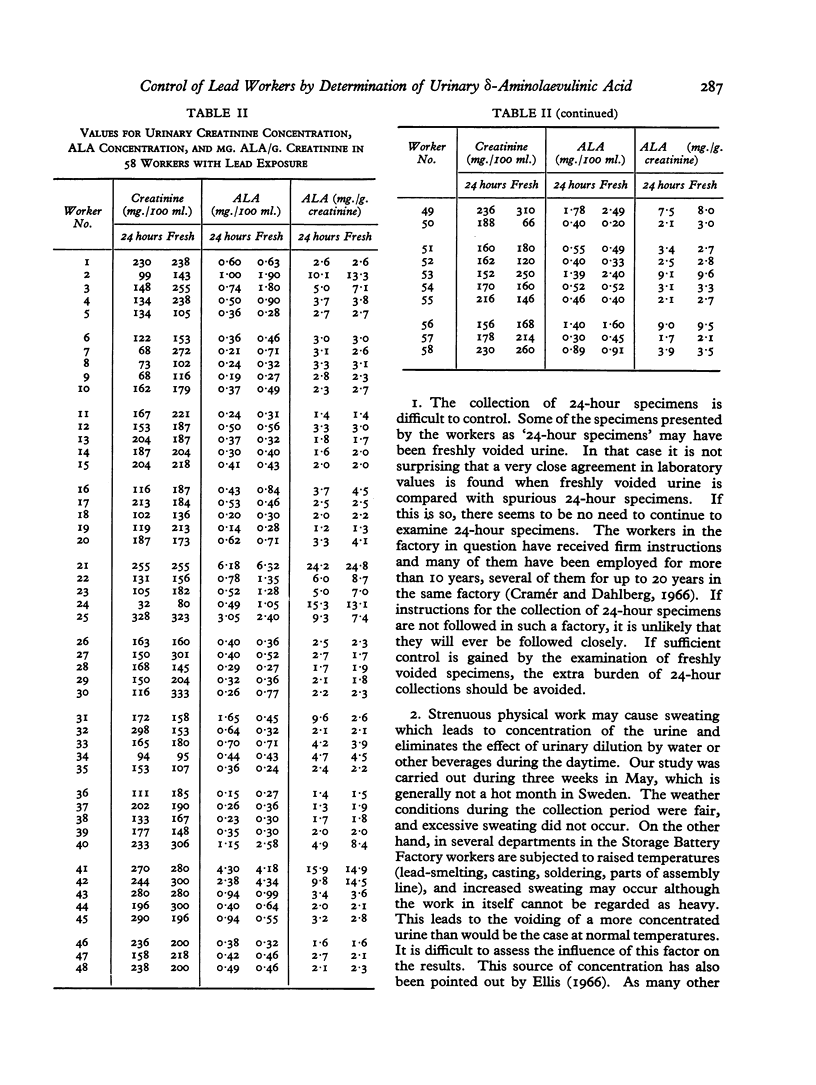
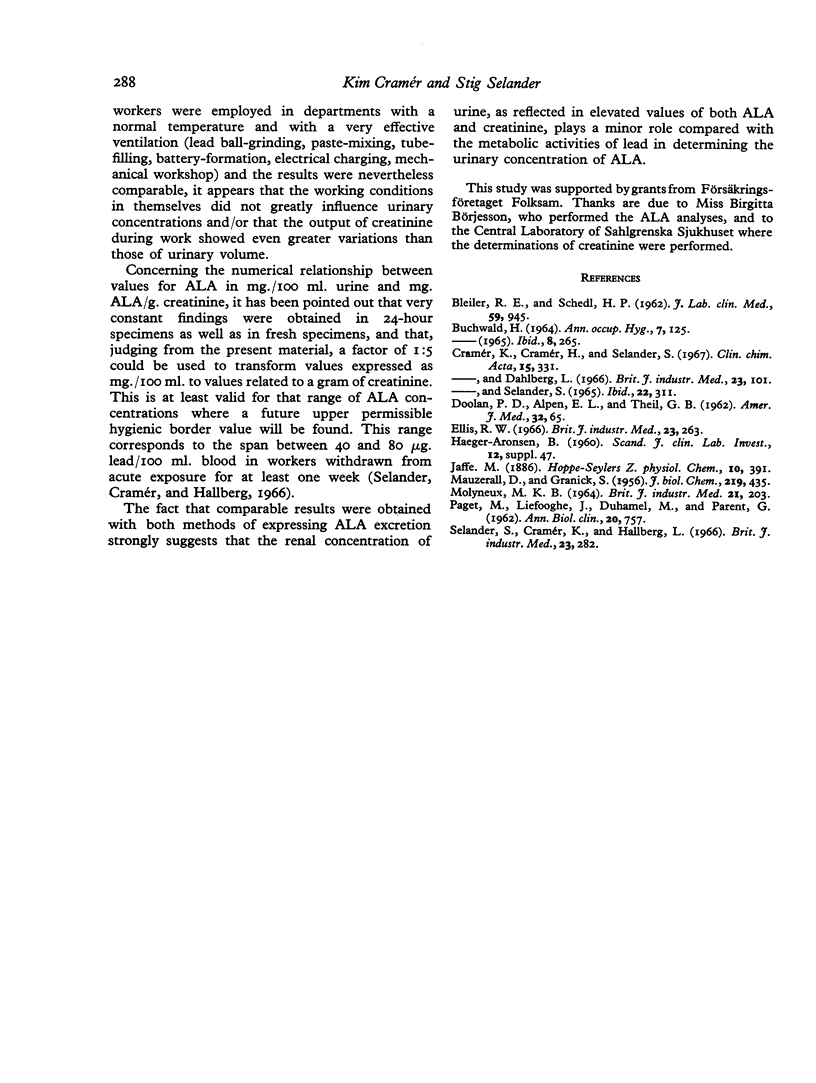
Selected References
These references are in PubMed. This may not be the complete list of references from this article.
- BUCHWALD H. THE SPECIFIC GRAVITY OF URINE SPECIMENS. Ann Occup Hyg. 1965 Jul;8:265–265. doi: 10.1093/annhyg/8.3.265. [DOI] [PubMed] [Google Scholar]


